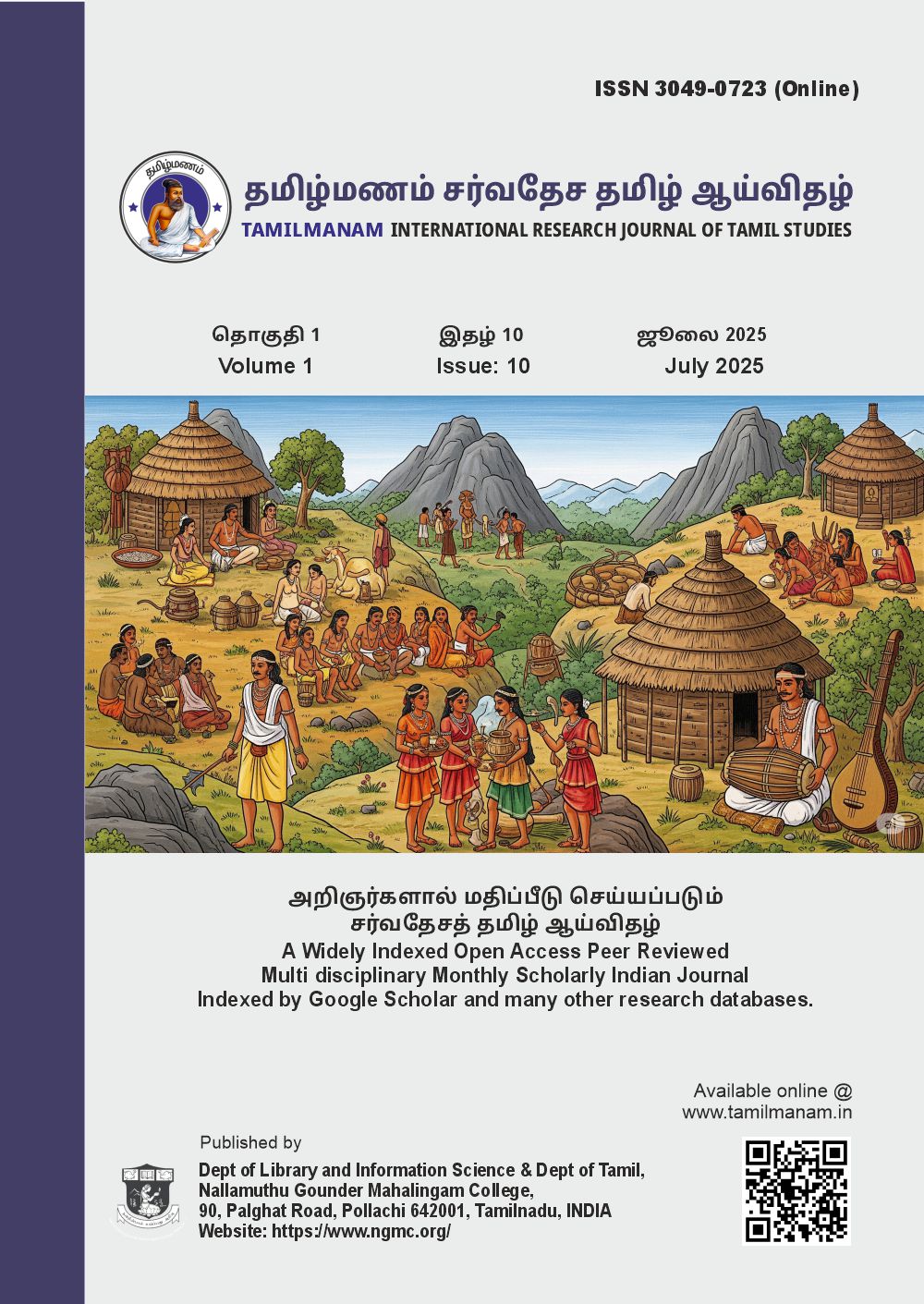SIDDHARKALIN ATTANGAM
சித்தர்களின் அட்டாங்கம்
DOI:
https://doi.org/10.63300/tm0110202509Keywords:
யோகம், சித்தர்கள், ஆசனம், சமாதி, பிரணாயாமம், Yoga, Siddhars, Pranayama, Dhyana, SamadhiAbstract
Indian philosophy has constructed many methods to reach God. In their place, Tamil poets found simple methods to realize God. Among these methods, yoga occupies an important place. Various yoga systemsAmong them, Atanga, Kundalini, Hatha, and Tantric yoga systems occupy an important place. Atanga consists of eight elements: Iyama, Niyama, It includes eight methods. Iyama and Niyama refer to moral positions. Asana is the keeping of the body in a position. Pranayama is the breathing exercise. Pratyayakaram is the deep contemplation of something. Dharana is the fixing of the mind on something.Asana, Pranayama, Pratyeka, Dharana, Dhyana, and Samadhi.Meditation is the concentration of the mind, Samadhi is the state of ecstasy. The yoga system of the Siddhas is to stabilize the body and mind. To create moral systems. The aim of the Siddhas is to preserve the human body from destruction and to realize God within the body.
Downloads
References
1. Arumugath Thamizhan. Karu-Thirumoolar Kalathin Kural (The Voice of Thirumular's Era). Thamizhini Publications, Chennai, 2022.
2. Mahalakshmi, T. Thirumularum Yogamum (Thirumular and Yoga). International Institute of Tamil Studies, Chennai, 2017.
3. Manikkavasagan, Gna. Thirumoolar Thirumanthiram Moolamum – Vilakka Uraiyum (Thirumular's Thirumanthiram: Original Text and Explanatory Commentary). Uma Publications, Chennai, 2003.
4. Vijayaregunathan, N. I. Indraya Yoga Nilaiyum Siddhar Padalkalin Payanpaadum (The Modern State of Yoga and the Application of Siddhar Songs). The Parker, Chennai, 2004.
5. Saravana Muthuppillai (Ed.). Pathinensiddhargal Periya Gnana Kovai (The Great Wisdom Collection of the Eighteen Siddhars). Thirumagal Vilas Press, Chennai, 2013.
ஆறுமுகத் தமிழன்,கரு-திருமூலர் காலத்தின் குரல், தமிழினி பதிப்பகம்,சென்னை, 2022
2.மகாலெட்சுமி, தி- திருமூலரும் யோகமும், உலகத் தமிழாராய்ச்சி நிறுவனம், சென்னை, 2017.
3.மாணிக்கவாசகன், ஞா. திருமூலர் திருமந்திரம் மூலமும் – விளக்க உரையும்,உமா பதிப்பகம், சென்னை, 2003.
4.விஜயரெகுநாதன்,நா.இன்றைய யோக நிலையும் சித்தர் பாடல்களின் பயன்பாடும்,தி பார்க்கர், சென்னை, 2004
5.சரவண முத்துப்பிள்ளை (தொ.ஆ.) பதினெண்சித்தர்கள் பெரிய ஞானக்கோவை, திருமகள் விலாச அச்சகம், சென்னை, 2013.
Downloads
Published
Issue
Section
License
Copyright (c) 2025 Dr. K. KALEESWARI (Author)

This work is licensed under a Creative Commons Attribution 4.0 International License.
Our journal adopts CC BY License Creative Commons Attribution 4.0 International License http://Creativecommons.org//license/by/4.0/ . It allows using, reusing, distributing and reproducing of the original work with proper citation.






